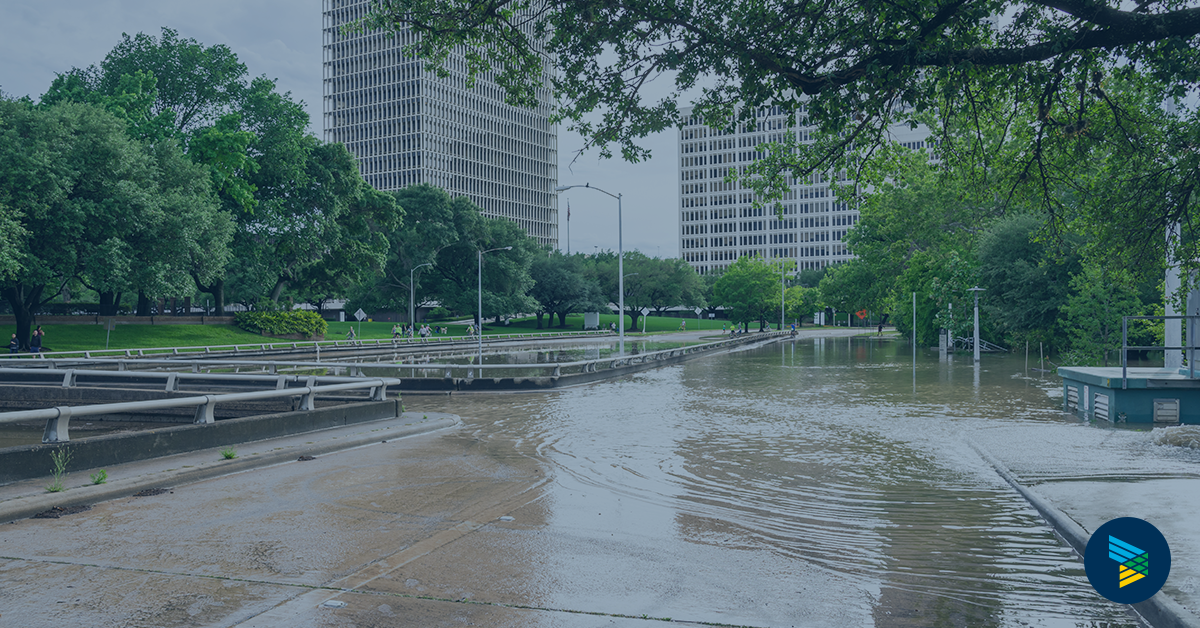
Creating a Flood Disaster Plan: What to Consider in Your Business Continuity Planning
Every business has to prepare for the worst. Those that don’t may never fully recover from a disaster. But not all disasters are created equal. And not all businesses are at risk for every kind of disaster. That’s why we’ve put together this quick disaster survival reference guide to help you ensure that your business can keep operating even if a natural disaster strikes.
Floods typically result from excessive upstream precipitation and/or runoff. They can range from flash floods, which typically occur on smaller rivers, to slower rising floods across large low-lying areas.
Potential Impact
Floods can have their greatest catastrophic impact on business facilities located in basements and first floors. Floods can also significantly interrupt business functions through power outages, loss of communications, and road flooding that prevents employees from commuting to and from work. Businesses should be especially cautious about asking employees, customers, or suppliers to drive when an area is under the threat of a flood since this is a leading cause of personal harm.
Risk Factors
According to the NOAA, damage due to flooding in the U.S. amounts to an average of almost $8 billion annually. Flood risk varies considerably by both probability and likely severity. The FEMA Flood Map Service Center (MSC) is the official public source for flood hazard information produced in support of the National Flood Insurance Program (NFIP).
Warning Times
The National Weather Service and other agencies typically issue three types of alerts: flood advisory, flood watch, and flood warning. Advisory and watch alerts can give businesses 24 hours or more to prepare for an event.
Technology Continuity
As noted above, businesses with any computer equipment located in basements or ground floors should take special precautions to protect their investments by getting them up and off the floor, if possible. Other appropriate precautions include:
- Increasing the frequency of off-site backups for data, applications, and server images.
- Preparation of an alternative worksite — including any necessary network/ Internet connectivity, desktops/laptops, printers, routing of incoming calls, etc.
- Emergency posting for the company website, along with timely updates as the extent and impact of the flood unfold.
People Continuity
Assuming an alert has been issued, businesses should not have employees report to work. Instead, arrangements should be made to have employees work from home, from the home of a friend or relative (if their home is within the projected flood area), or from an alternative facility well beyond the potential reach of flooding. If for some reason employees are on-site when a warning is issued, the facility should be quickly evacuated. Information about the suggested evacuation route(s) should be shared with employees. Again, under no conditions should employees be encouraged to commute through a flood-prone area.
Process Continuity
Because floods can have an extensive regional impact lasting for several days, businesses may need to make alternative provisions for customers and supply-chain partners:
- For customers within the flood area, businesses should obtain necessary information about their own flood preparations. This may include alternative worksites, key contacts’ mobile phone numbers, etc.
- For customers not within the flood area, businesses should proactively communicate about the potential for a disruption and the steps being taken to avoid that disruption. Alternative plans should be made in the event that the business is still interrupted — such as direct servicing of customers by supply chain partners where appropriate.
- For supply chain partners, plans should be made for emergency situations, such as power outages and road closures. For example, decisions can be made not to ship goods to the business facility in order to avoid potential damage to inventory
Insurance Considerations
Flood insurance is a highly specialized category within the broader property and casualty (P&C) market. Business owners should review their policies carefully to make sure they are covered for all potential types of loss at a fair price. In some cases, it may be necessary to obtain a flood policy from a separate underwriter specializing in flood-related business coverages.